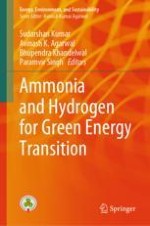2024 | OriginalPaper | Chapter
15. Hydrogen-Fueled Spark Ignition Engines: Understanding NOx Formation and Mitigation Through Engine Design Innovations
Authors : Parampreet Singh, Sridhar Sahoo, Neeraj Kumbhakarna, Paramvir Singh
Published in: Ammonia and Hydrogen for Green Energy Transition
Publisher: Springer Nature Singapore
Activate our intelligent search to find suitable subject content or patents.
Select sections of text to find matching patents with Artificial Intelligence. powered by
Select sections of text to find additional relevant content using AI-assisted search. powered by
